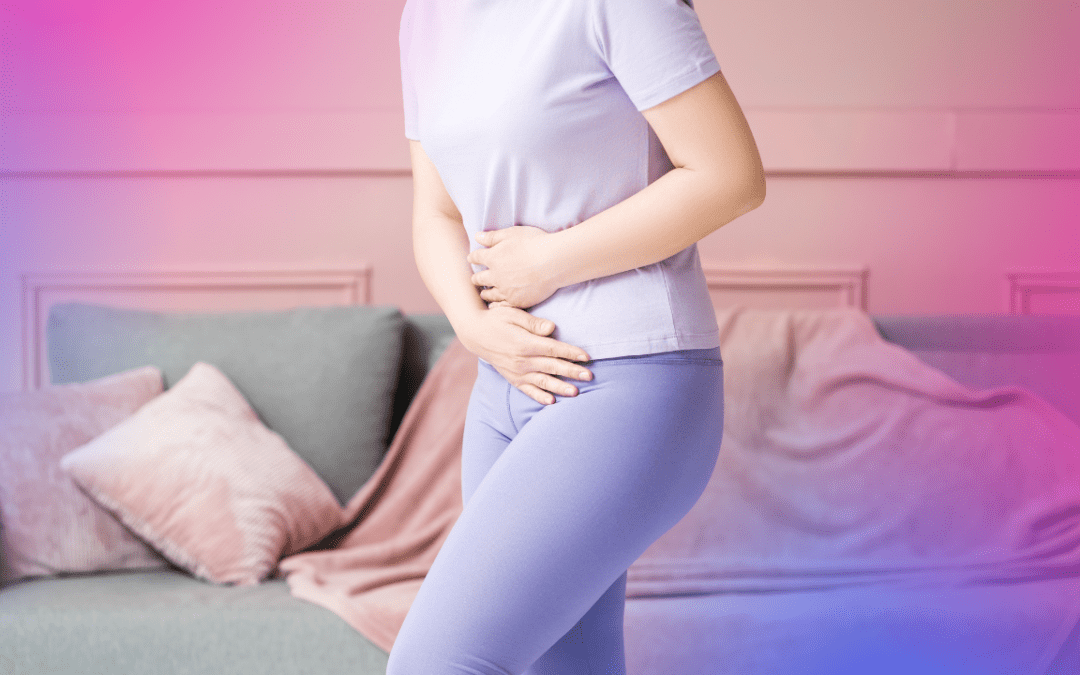Menopause marks the end of menstruation and significant hormonal changes in a woman’s body. Despite the decline in ovarian function, some women experience pain in the region where their ovaries are located.
While occasional discomfort may not be alarming, persistent or severe pain can indicate underlying medical conditions requiring attention.
Common Causes of Ovary Pain After Menopause
There are several potential causes of ovarian pain after menopause. Some are benign, while others may require immediate medical intervention.
1. Ovarian Cysts
Although ovarian cysts are most common during reproductive years, they can still develop after menopause. These fluid-filled sacs form on or inside the ovary and can sometimes cause pain and other symptoms, such as:
- Pelvic pain that may be dull or sharp
- Bloating or abdominal swelling
- Painful intercourse
- Pressure on the bladder or rectum
- Nausea or vomiting (if the cyst ruptures)
Most postmenopausal ovarian cysts are benign, but any newly discovered cyst should be evaluated, as the risk of malignancy increases with age.
2. Endometriosis
Endometriosis occurs when tissue similar to the uterine lining grows outside the uterus. While this condition usually improves after menopause due to decreased estrogen levels, some women—especially those on hormone replacement therapy (HRT)—may continue to experience symptoms. Postmenopausal endometriosis can lead to:
- Chronic pelvic pain
- Pain during bowel movements
- Painful intercourse
- Lower back discomfort
Endometriosis-related pain can be managed through medication, HRT adjustments, or surgical intervention in severe cases.
3. Ovarian Torsion
Ovarian torsion occurs when the ovary twists around its supporting ligaments, cutting off its blood supply. Though rare in postmenopausal women, it can happen if an ovarian mass or cyst is present. Symptoms of ovarian torsion include:
- Sudden, severe pelvic or abdominal pain
- Nausea and vomiting
- Tenderness in the lower abdomen
Ovarian torsion is a medical emergency and typically requires surgical treatment.
4. Pelvic Inflammatory Disease (PID)
PID is an infection of the female reproductive organs, usually caused by sexually transmitted bacteria or post-surgical infections. Though less common after menopause, it can still occur. Symptoms include:
- Persistent pelvic pain
- Fever and chills
- Unusual vaginal discharge with an odor
- Painful urination or bowel movements
Prompt antibiotic treatment is necessary to prevent complications, including chronic pelvic pain or infertility.
5. Uterine Fibroids
Fibroids are noncancerous growths in the uterus. While they usually shrink after menopause, they can still cause discomfort, especially if they become large or degenerate. Common symptoms include:
- Pelvic pain or pressure
- Frequent urination
- Lower back pain
- Heavy or irregular bleeding (if on HRT)
Treatment options include medication, embolization, or surgery, depending on severity.
6. Gastrointestinal or Musculoskeletal Causes
Pain that feels like it is coming from the ovaries may actually originate from other nearby structures. Possible non-gynecological causes include:
- Irritable Bowel Syndrome (IBS): Can cause abdominal cramping and bloating.
- Diverticulitis: Inflammation of small pouches in the digestive tract.
- Hernias: Can cause localized pain in the lower abdomen.
- Pelvic Floor Dysfunction: Can lead to chronic pelvic pain and discomfort.
When to Seek Medical Attention
Although mild ovary pain may not be a cause for concern, certain symptoms require prompt evaluation. Contact a healthcare provider if you experience:
- Sudden, intense pelvic or abdominal pain
- Persistent discomfort lasting more than a few days
- Pain accompanied by fever, nausea, or vomiting
- Abnormal vaginal bleeding or discharge
- Unexplained weight loss
- A palpable mass or swelling in the lower abdomen
Early diagnosis can help rule out serious conditions, including ovarian cancer.
Diagnostic Approaches
To determine the cause of postmenopausal ovary pain, your healthcare provider may recommend:
Pelvic Examination
A physical exam can help identify tenderness, swelling, or masses in the pelvic region.
Imaging Tests
- Ultrasound: A noninvasive imaging test to detect cysts, fibroids, or abnormal growths.
- MRI or CT Scan: Provides detailed imaging of the pelvic organs.
Blood Tests
- CA-125 Blood Test: Often used to assess the risk of ovarian cancer, though elevated levels can also be seen in benign conditions.
- Hormone Panels: To evaluate estrogen, progesterone, and other hormone levels.
Laparoscopy
A minimally invasive procedure where a small camera is inserted into the abdomen to visualize the ovaries and surrounding structures.
Treatment Options
The appropriate treatment depends on the underlying cause of the pain.
Medications
- Pain Relievers: NSAIDs or acetaminophen can help manage mild discomfort.
- Antibiotics: Prescribed if an infection, such as PID, is present.
- Hormone Therapy: May help alleviate symptoms related to endometriosis or fibroids.
Surgical Interventions
- Ovarian Cyst Removal: If a cyst is large, painful, or suspicious for malignancy.
- Hysterectomy: In cases of severe fibroids or endometriosis.
- Oophorectomy: Surgical removal of the ovaries if cancer or severe disease is present.
Lifestyle Modifications and Preventive Measures
While some causes of ovary pain cannot be prevented, maintaining overall pelvic health is beneficial.
- Regular Exercise: Improves circulation and reduces inflammation.
- Balanced Diet: Supports hormonal balance and reduces the risk of fibroids and endometriosis.
- Routine Medical Check-ups: Early detection of ovarian cysts, fibroids, or infections.
How Amazing Meds Can Help
At Amazing Meds, we specialize in Bioidentical Hormone Replacement Therapy (BHRT) and peptide therapy to support hormonal balance and overall well-being. Our services can help alleviate symptoms related to postmenopausal conditions, including:
- Customized Hormone Therapy: Tailored to your specific needs.
- Peptide Therapy: Supports tissue repair and inflammation reduction.
- Comprehensive Evaluations: Ensuring the best treatment approach for your symptoms.
If you’re experiencing postmenopausal ovary pain and want to explore effective solutions, contact Amazing Meds for a consultation.
Disclaimer: This article is for informational purposes only and does not replace professional medical advice.
